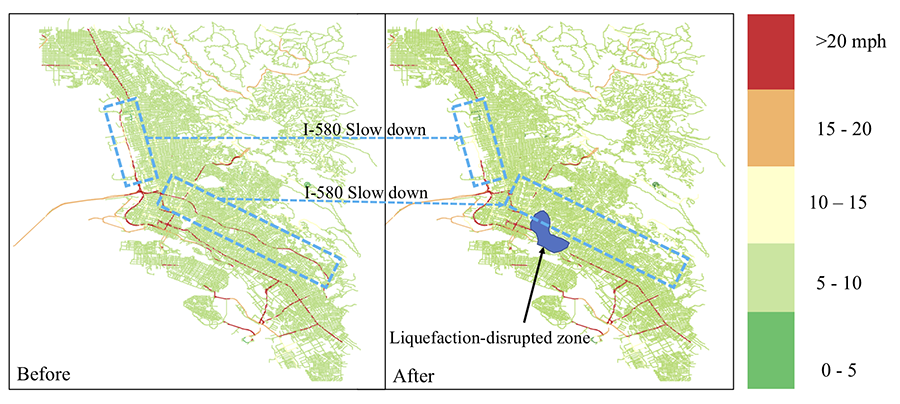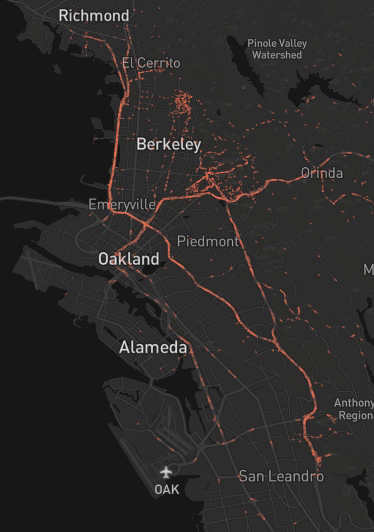
Can Liquefaction Paralyze The Bay Area by Causing Trouble to the Transportation Infrastructure?
Our paper entitled "Regional Evaluation of Liquefaction Induced Lateral Land Deformation and Its Application to an Urban Area" was selected as the Excellent Paper at the World Transportation Convention held in Beijing in June, 2019. Based on this work, my collaborators and I are working on a new project investigating the resilience and interconnectivity of communities and multiple infrastructure systems, including buildings, water distribution system, the traffic network, etc., under extreme events.

This study depicts a scenario where the vulnerability to soil liquefaction leads to the deterioration of a city-scale traffic system shortly after an earthquake.
The research framework is applied to East Bay to see what will happen after a Magnitude 7 earthquake.
The result of the simulation indicates that the transportation infrastructure will be significantly impacted due to the weakness in soil and the the traffic on major lifelines is likely to be paralyzed.

Published papers:
C. Wang*, D. Wang, Q. Chen, Regional Evaluation of Liquefaction-Induced Lateral Ground Deformation for City-scale Transportation Resilience Analysis, Journal of Infrastructure Systems, 2021, https://doi.org/10.1061/(ASCE)IS.1943-555X.0000601
C. Wang* & D. Wang, Regional Evaluation of Liquefaction Induced Lateral Land Deformation and Its Application to an Urban Area, World Transportation Convention, Beijing, China, 2019
···